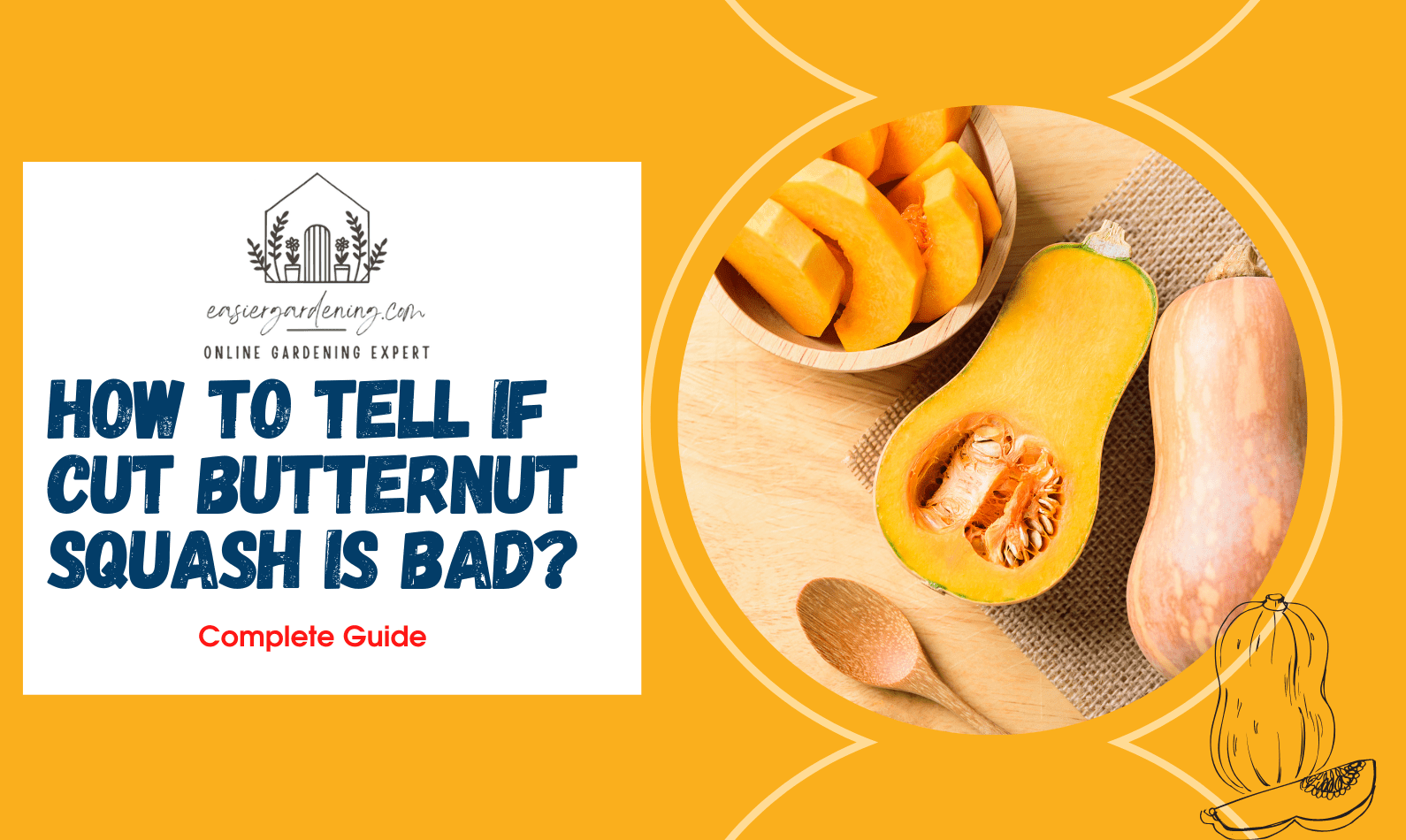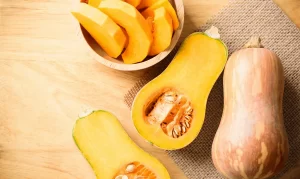Storing Butternut Squash: How to Tell If Cut Butternut Squash Is Bad: Winter is the favorite season of vegetable lovers. We have a wide range of fruits and vegetables in this season. Butternut squash is one of them. The harvesting period of this healthy vegetable is from October to February.
As it is a seasonal veggie, most people look for ways to store it for later use. Although it can be stored in the storage room, refrigerator or freezer, there are certain methods to do it.
When you use butternut squash later, you need to ensure that the squash is in good condition. You might wonder how to tell if squash is bad or how to tell if cut butternut squash is bad when it’s frozen. Well, the good news is it is a very hardy vegetable and can be kept for a long time if stored properly. However, over time, they do deteriorate if not used for a very long time. Since this vegetable tends to deteriorate slowly, you surely have enough time to preserve it.
Contents
What is the Shelf Life of Butternut Squash?
Firstly, you should learn how long does butternut squash lasts. Under ideal conditions, the whole butternut squash can be stored for three months. This means that its storage temperature should be between 50°F and 55°F (or 10°C to 13°C). Unfortunately, it is difficult for most people to maintain this temperature range continuously.
Therefore, the best place to store butternut squash is in the pantry. It is usually cooler there than elsewhere in the house. You can keep the butternut squash in the pantry for one to two months. Of course, the squash’s actual shelf life largely depends on its harvest time and purchase time.
Sliced or chopped butternut squash can be stored in the refrigerator for 3 to 4 days. It must be stored in a sealed container. Otherwise, its shelf life will be significantly shortened. If you search for how long cooked butternut squash lasts in the refrigerator, the answer is 4 to 5 days.
Expert Tips: Once the butternut squash is sliced and the flesh is visible, it can be stored for about 3 to 4 hours at room temperature. If you do not plan to use it after 4 hours, it should be kept refrigerated.
How to Tell If the Butternut Squash Is Bad?
First, you need to check the peel. It should be solid, reasonably uniform in colour, and should not have any softness or rot spots. If there are only a few small soft spots or damaged areas, you can cut them off like other vegetables. If they are big enough, throw them away. If the outer layer looks okay, you can cut the squash. If the colour and texture of the flesh are expected, you can use it. Also, if the butternut squash smells sour, it will not be very wise to use it.
Warning: If the whole butternut squash has begun to drip liquids, looks muffled or empty inside, or is soft, throw it away.
Sometimes vegetables are accidentally contaminated before being placed in the refrigerator, and mould will form after being placed in the refrigerator for a day or two. If this happens, discard the entire container. Now how to tell if cut butternut squash is bad. If the chopped butternut squash has been in the refrigerator for more than a week or the quality is no longer adequate, it should be thrown away. Observe the cooked winter melon for signs of mould or unpleasant smell.
Expert Tips: If the squash is stored for a long time, the part with the seeds inside may start to look a little rough, which is generally disgusting. But this is normal, just cut it off, and you can enjoy the rest.
How to Store Butternut Squash?
At room temperature, butternut squash should be stored in a cool and dry place. A good place is a pantry. The cut or ground butternut squash should not be kept for more than 1 hour at room temperature. If you expose them to the air, they will be contaminated. The cooked butternut squash should not be stored for more than 30 minutes at room temperature. If it is longer, it can be stored in the refrigerator.
Store the cut or chopped butternut squash in the refrigerator is a good choice. Please put it in an airtight container or resealable plastic bag. If you use plastic bags, be sure to squeeze out as much air as possible before sealing. If the seeds are exposed to the air, they will oxidize and deteriorate prematurely. If you have cooked the butternut squash, be sure to keep it refrigerated. Please make sure the cooked squash comes to room temperature before storing it in a sealed container. If the butternut squash is not allowed to cool first, the water will evaporate, causing condensation in the container.
Expert Tips: As for the refrigerator, never put whole butternut squash in the refrigerator. It destroys the texture. If you store the squash in the refrigerator for a few days, it will become soft due to the low temperature.
Final Thought: How to Tell If Cut Butternut Squash Is Bad?
Butternut squash is only available in late autumn and early winter. In other words, if you like to eat butternut squash during another season, freezing is a good choice. This is also true if you know that you can’t finish the squash before it gets terrible. However, make sure to cut or slice it before freezing if you plan to use the squash quite often. The whole butternut squash freezes well, but when you defrost it, it will be soft.
Read more about How to Kill Prickly Pears?
When it comes to how to tell if cut butternut squash is bad, you should remember that it is always good the check the quality of the squash before use after you have stored it. After blanching the mustard tuber, be sure to use the quick-freezing method. This prevents the vegetables from sticking together during the freezing process.



